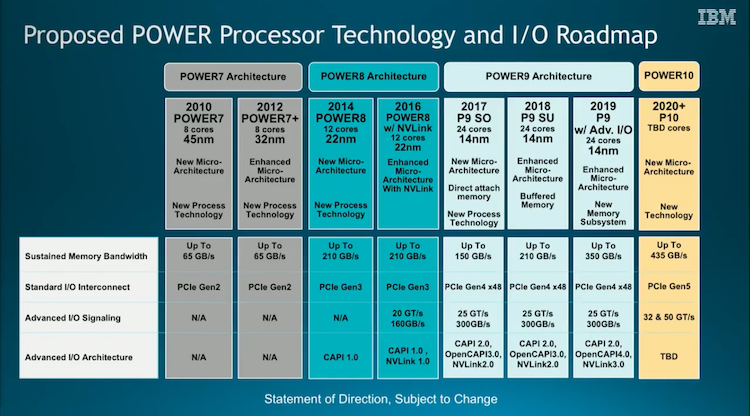

When IBM first created the OpenPower Foundation in 2013, there were vendors that thought they would get into the silicon business and build their own chips, but as it turns out, that’s not quite what happened.
At the OpenPower Summit 2018 event, Brad McCredie, IBM fellow and VP, outlined how OpenPower has progressed over the last five years and what members are actually building.
“As technologies and processors cease to provide the cost-performance improvement, you have to find something else to go fill in the gap,” McCredie said during his keynote address. “What most of the industry has focused on [is] working under Moore’s Law, and where technology and processors are taking us, the biggest gap filler we see is acceleration.”
Acceleration is particularly useful for the Artificial Intelligence/ Machine Learning (AI/ML) workloads that McCredie said are now the most profitable for server systems vendors.
Aside from just making its silicon designs open source, IBM also opened up the baseboard management controller (BMC) technology as well. The OpenBMC project is now moving to the Linux Foundation as a way to help further expand the impact of the effort beyond just OpenPower.
“We have moved the needle in the industry to a more open firmware stack,” McCredie said. “This is all about making the plumbing more ubiquitous and easy to get to.”
McCredie noted that when he first helped start the OpenPower Foundation, all the participating vendors said they wanted to become microprocessor designers. It turns out money is a significant limiting factor for vendors to build their own microprocessors, even with the benefit of IBM Power designs available from the OpenPower Foundation.
The interesting shift that has occurred in the last few years, according to McCredie, is that organizations have recognized the benefit of accelerator technology that can further enable microprocessors.
An offshoot of the OpenPower Foundation is OpenCAPI, which is an effort to build an Open Coherent Accelerator Processor Interface that is supported by AMD, Google, Mellanox and Micron among the group’s founding members.
“This is strategic; this is where the industry is going; this is where the future of IT is,” McCredie said. “It will redefine and reshape what the architecture of systems is going to be.”
McCredie added that the path is still available for those that want to design and build their own silicon, but that’s not the big differentiator for OpenPower in 2018.
McCredie also revealed the roadmap for Power Processor technology, commenting that advanced I/O signalling and connectivity is where the performance gains in the future are set to come from.
“Cores, caches and system buses used to be the differentiator,” McCredie said. “The I/O was the plumbing; now that’s the differentiator and where the value is going to come from.”

Sean Michael Kerner is a senior editor at ServerWatch and InternetNews.com. Follow him on Twitter @TechJournalist.
Property of TechnologyAdvice. © 2025 TechnologyAdvice. All Rights Reserved
Advertiser Disclosure: Some of the products that appear on this site are from companies from which TechnologyAdvice receives compensation. This compensation may impact how and where products appear on this site including, for example, the order in which they appear. TechnologyAdvice does not include all companies or all types of products available in the marketplace.